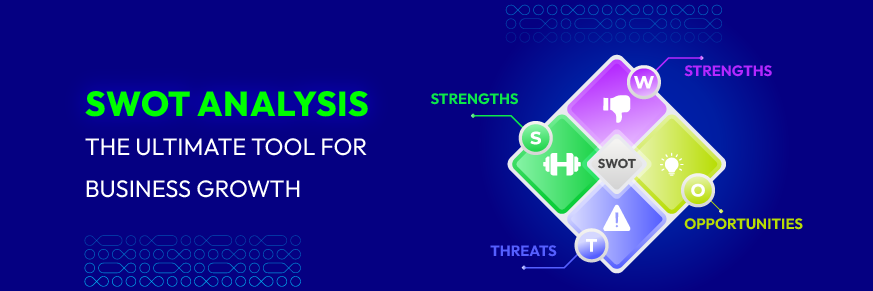Learn Shopify: Develop Shopify For E-commerce From The Basics
Summer Nguyen | 02-20-2024
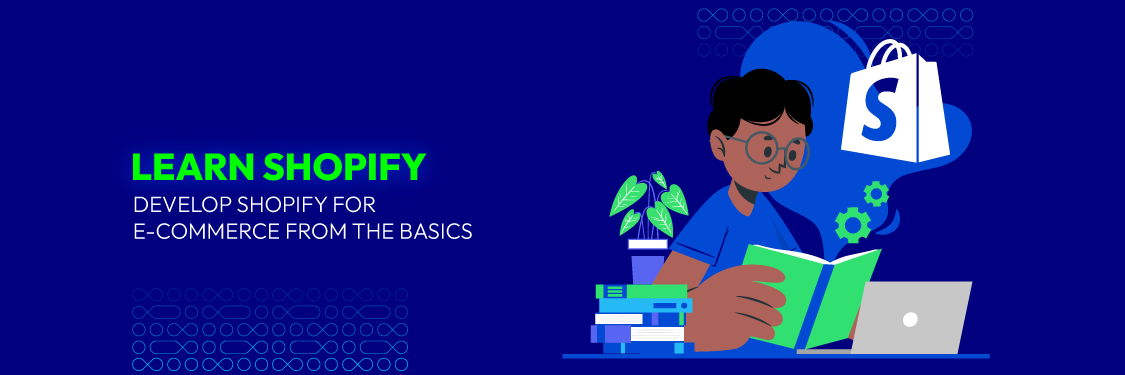
Are you a budding entrepreneur looking to establish your online presence? Do you want to learn Shopify to know how to run e-commerce seamlessly?
Join us as we unravel the key insights and practical steps to develop a thriving Shopify store, empowering you to confidently navigate the e-commerce landscape. Let’s embark on this Shopify journey together.
Table of Contents:
What is Shopify?
Shopify serves as an e-commerce platform, providing individuals and businesses with the capability to establish and oversee online stores. Shopify furnishes an assortment of tools and features that empower users to establish an online storefront, sell products or services, and manage diverse aspects of e-commerce, such as inventory management, payment processing, and order fulfillment.

Shopify simplifies creating and managing an online store, making it accessible to individuals and businesses without extensive technical expertise. It has gained popularity as a user-friendly and versatile e-commerce solution.
Read more: What is Shopify? How to start your e-commerce with Shopify?
Why Should You Learn Shopify?
Learning Shopify can be beneficial for several reasons, especially if you are interested in entering the field of e-commerce or want to expand your skills in online business. Here are some compelling reasons to contemplate learning Shopify:
- E-commerce is booming: The e-commerce industry has experienced significant growth, and online shopping has become a common way for consumers to make purchases. Learning Shopify equips you with the skills to participate in this thriving market.
- Versatility: Shopify caters to businesses of various sizes and industries. Whether you are running a small boutique, a dropshipping business, or a large enterprise, Shopify can be customized to meet your specific needs.
- App ecosystem: The Shopify App Store provides a diverse selection of apps and plugins that can augment the functionality of your online store. Learning how to integrate and use these apps can provide additional features and capabilities.
- Payment options: Shopify integrates with various payment gateways, making it easy for customers to make purchases using their preferred payment methods. Understanding how to set up and manage payment processing is valuable for e-commerce professionals.

- Online marketing tools: Shopify includes built-in tools for marketing and SEO, helping you optimize your online store for search engines and reach a wider audience. Learning these tools can contribute to the success of your e-commerce business.
Benefits of Using Shopify for E-commerce
Shopify stands as a popular e-commerce platform, providing a multitude of benefits for businesses looking to establish and manage their online stores. Here are some key advantages of using Shopify for e-commerce:
- User-friendly interface: Shopify is celebrated for its interface that is both user-friendly and intuitive, enabling users to effortlessly establish and oversee their online storefronts without requiring extensive technical knowledge. The platform’s dashboard and tools are designed for simplicity and efficiency.
- Quick and easy setup: With customizable templates and a streamlined setup process, Shopify allows businesses to launch their online stores quickly. This reduces the time and effort needed for the initial setup, enabling companies to sell products sooner.
- Secure and reliable platform: Shopify prioritizes security and reliability, offering a secure environment for online transactions with industry-standard encryption. The platform also provides reliable hosting, ensuring high uptime for your online store.

- Mobile responsiveness: Shopify themes are crafted to be responsive on mobile devices, ensuring a smooth shopping experience across a variety of platforms. This adaptability is essential for meeting the rising demand from customers who utilize smartphones and tablets for their online shopping activities.
- Scalability and flexibility: Shopify is a scalable platform that can accommodate the growth of your business. Whether you’re a small startup or a large enterprise, Shopify’s flexibility allows you to expand your online presence and handle increased traffic and transaction volumes effectively.
How Does Shopify Work?
Shopify is an e-commerce platform that simplifies online store creation and management. Users sign up, select a plan, and set up their store by choosing a domain, customizing templates, and adding products. The platform offers themes and apps for customization, supports various payment gateways, and ensures secure hosting.

Users can manage orders, track inventory, and leverage analytics for business insights. Shopify’s user-friendly interface, scalability, and integrated features make it the perfect choice.
How to Master the Basics of Shopify
Mastering the basics of Shopify involves understanding key features and processes to effectively set up and manage your online store. Here’s a step-by-step guide to help you get started:
1. Familiarize Yourself with the Shopify Dashboard
Spend time navigating through the Shopify admin dashboard. Explore the main sections, including Orders, Products, Customers, Analytics, and Settings.
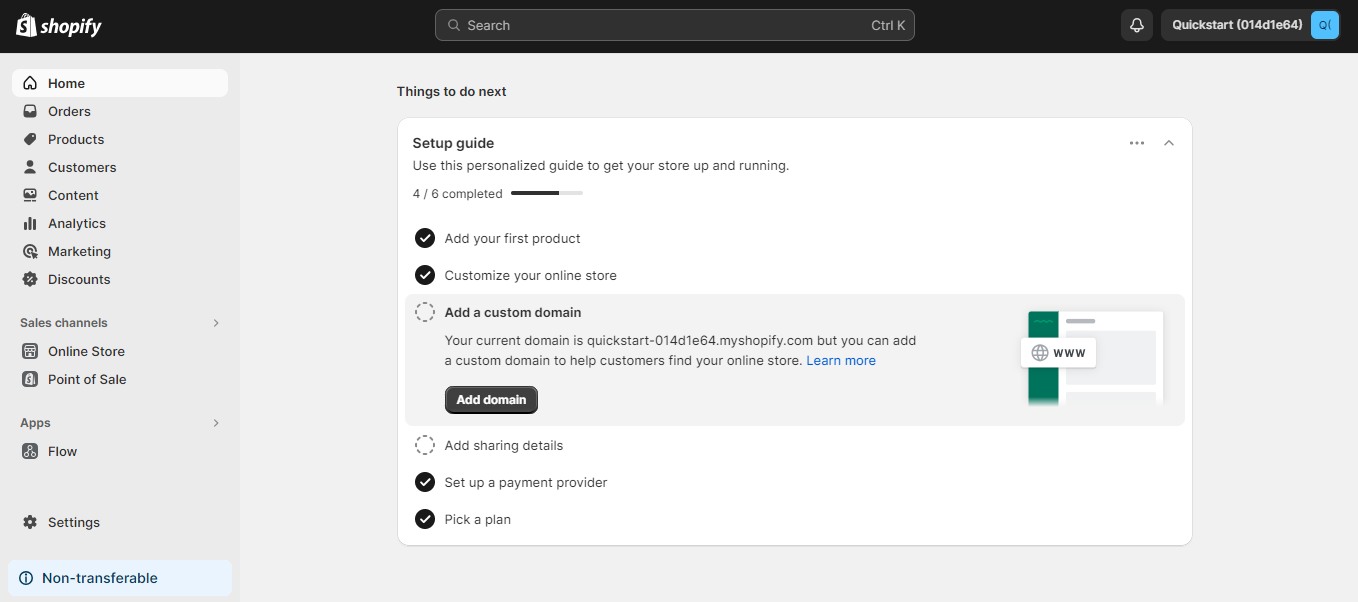
- Orders: The Orders section is where you manage customer purchases. Understand order processing, payment handling, and customer inquiries. Efficient order fulfillment and prompt customer service contribute to a positive shopping experience.
- Products: Product management involves adding items, crafting compelling descriptions, uploading quality images, and organizing products into categories. A well-organized product catalog enhances the overall look and usability of your store.
- Customers: Create and manage customer profiles for personalized interactions. Use insights to tailor marketing strategies. Efficient customer management builds trust and loyalty.
- Analytics: Analyze sales trends, website traffic, and customer behavior. Use insights to refine product offerings and marketing strategies. Regular analysis informs data-driven decision-making.
- Settings: Configure your store’s foundation in the Settings menu. From store details to payment gateways, taxes, and shipping options, these settings ensure your store aligns with your business model and provides a seamless customer experience.
2. Shopify Learn to Customize Your Store
- Choose a theme: Select a visually appealing theme from the Shopify Theme Store. Consider aesthetics, functionality, and how well it aligns with your brand. The chosen theme sets the visual tone for your online store.
- Theme editor: Customize your theme using the Theme Editor without coding. Adjust colors, fonts, and layout elements to create a unique and cohesive brand experience. Mastering the Theme Editor allows for personalized store aesthetics.
- Upload logo: Your logo is your brand’s identity. Upload it to reinforce brand recognition. Consider dimensions, placement, and integration with the theme for a professional and trustworthy online presence.
3. Add and Manage Products
Adding and managing products on Shopify is a pivotal aspect of your e-commerce journey. It goes beyond simply listing items; it involves creating a compelling and user-friendly shopping experience.
- Product creation: When adding products, focus on crafting detailed and persuasive descriptions. Help customers visualize the product by uploading high-quality images from various angles. Ensure that product variants, such as sizes or colors, are accurately represented. This meticulous focus on details elevates the overall presentation of your offerings.
- Inventory management: Efficient inventory management is crucial. Regularly update stock levels to avoid overselling and disappointments. Use Shopify’s inventory tracking features to receive notifications when products run low. This ensures a smooth and reliable experience for your customers.
- Categories and collections: Organize your products into logical categories and collections. This not only aids in navigation but also enhances the visual appeal of your storefront. Consider creating featured collections or product bundles to highlight specific offerings. A well-organized product catalog contributes to a positive and seamless shopping experience.
4. Set Up Payments and Taxes
- Payment gateway: Configuring your preferred payment gateway is critical in establishing a seamless checkout process. Choose a gateway that aligns with your business model, whether it’s PayPal, Stripe, or other options. Ensure the payment process is secure, straightforward, and supports various payment methods to cater to customer preferences.
- Tax configuration: Understand the tax regulations relevant to your business location. With Shopify, you can configure automatic tax calculations based on your store’s location and the customer’s shipping address. This ensures your customers see the correct prices and helps you comply with tax obligations.
5. Configure Shipping
- Shipping Zones: Define shipping zones based on regions and set corresponding shipping rates. Tailor your shipping options to meet customer expectations and regional preferences. Offering choices such as standard, expedited, or free shipping provides flexibility for your customers.
- Shipping Rates: Clearly communicate shipping rates during the checkout process. Transparent pricing helps prevent cart abandonment and ensures customers understand their total costs. Consider implementing a free shipping threshold to incentivize larger purchases.
- Shipping Strategy: Develop a shipping strategy that aligns with your business model. Whether you offer flat-rate shipping, real-time carrier rates, or a combination, ensure that it is cost-effective and addresses the preferences and requirements of your audience.
6. Understand Customer Management
- Customer profiles: Dive deeper into managing customer relationships through Shopify. Utilize customer profiles to gather insights into purchasing behavior, preferences, and demographics. Understanding your customer base allows for targeted marketing and personalized communication.
- Communication tools: Explore the communication tools within Shopify to interact with customers. Respond to inquiries promptly, address concerns, and foster a positive relationship. Excellent customer management contributes to loyalty and positive word-of-mouth marketing.
7. Optimize Your Store for SEO
- SEO best practices: Delve into SEO settings to optimize your store for search engines. Craft compelling product descriptions with relevant keywords. Fine-tune meta tags, URLs, and alt text for images. SEO optimization enhances your store’s visibility, driving organic traffic and potential customers.

- Content marketing: Consider integrating a blog into your Shopify store. Regularly publish high-quality content related to your products, industry, or customer interests. Content marketing boosts SEO and establishes your store as an authoritative and trustworthy source.
8. Explore Shopify Apps
- App integration: Explore the vast array of Shopify apps available in the App Store. Identify apps that align with your business goals, whether it’s improving marketing efforts, enhancing customer experience, or streamlining operations. App integration allows you to tailor your store’s functionality to your specific needs.
- App management: Master the management of installed apps. Regularly review app performance, update configurations, and explore new additions. This ongoing process ensures your store stays current with the latest tools and technologies.
Read more: Top 30+ Best Shopify Apps: How To Choose The Right One
9. Master Order Processing
- Fulfillment process: Deepen your understanding of the order fulfillment process. Streamline workflows to ensure timely processing and shipping. Implement best practices for packaging and handling to enhance the overall customer experience.
- Refunds and returns: Familiarize yourself with handling refunds and returns. A clear and efficient refund policy builds customer trust and contributes to a positive shopping experience.
10. Utilize Analytics
- Advanced analytics: Explore advanced analytics features in Shopify. Dive into specific reports such as customer lifetime value, conversion rates, and product performance. Advanced analytics provide a nuanced understanding of your business, allowing for strategic decision-making.
- A/B testing: Consider implementing A/B testing for different store elements, such as product page layouts or promotional banners. Evaluate the results to pinpoint what strikes a chord most effectively with your audience and continuously optimize your store for higher conversions.
11. Provide Excellent Customer Support
- Timely responses: Prioritize timely responses to customer inquiries and support requests. Swift communication builds trust and satisfaction, fostering positive customer experiences.
- Live chat: Consider implementing live chat support to address customer queries in real-time. Taking this proactive approach can markedly improve the customer support experience.
12. Stay Informed with Shopify Resources
- Help center: Regularly check the Shopify Help Center for updated documentation, guides, and tutorials. Remaining up-to-date on new features ensures you’re maximizing the potential of your Shopify store.
- Community engagement: Join the Shopify Community to connect with other entrepreneurs. Engaging in discussions, sharing experiences, and seeking advice from the community can provide valuable insights and solutions to common challenges.
- Webinars and events: Attend webinars and events hosted by Shopify to stay updated on industry trends, new tools, and effective strategies. Continuous learning positions you to adapt to changes and implement innovations in your store.
13. Optimize for Mobile
- Mobile-friendly design: Ensure that your Shopify store is optimized for mobile devices. Test the mobile user experience, including navigation, product viewing, and checkout. A mobile-friendly design is crucial as a growing number of customers shop using smartphones.
- Responsive themes: Choose and customize responsive themes that adapt seamlessly to various screen sizes. A responsive design guarantees a consistent and enjoyable shopping experience for customers accessing your store from different devices.
14. Secure Your Store
- Password protection: Implement robust password practices for your Shopify account to enhance overall store security. Periodically change passwords and limit access to authorized personnel exclusively.
- Secure Socket Layer (SSL) encryption: Enable SSL encryption for your store to secure customer data during transactions. An SSL certificate establishes a secure connection and fosters trust among customers by assuring safety.
15. Test Transactions
- Transaction testing: Regularly conduct test transactions to ensure that the entire purchase process is smooth and error-free. Verify that payment gateways, shipping options, and order processing are working correctly.
- Payment gateway testing: Specifically test payment gateways to confirm that transactions are processed accurately. This step ensures that customers can make purchases seamlessly without encountering payment-related issues.
Learn Shopify: Step-by-Step Guide
Learning Shopify is a step-by-step process that involves understanding the platform’s features and functionalities. Here’s a comprehensive guide to help you learn Shopify:
Step 1: Create a Shopify Account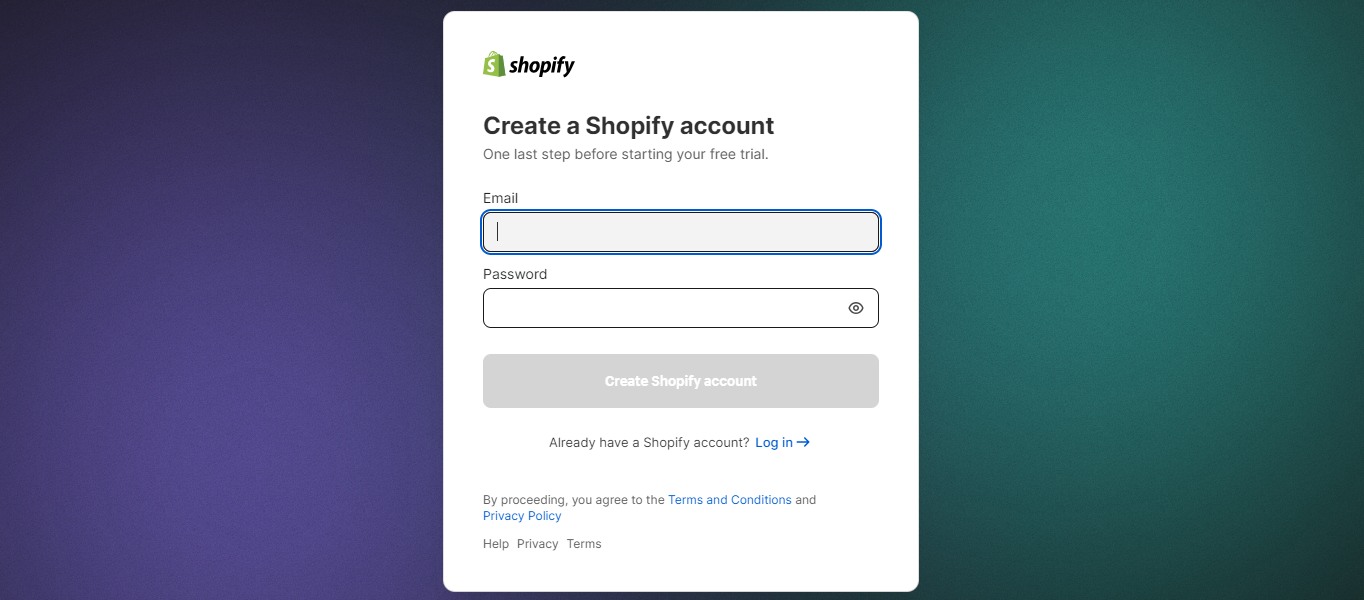
- Visit the Shopify website and choose the “Get Started” option.
- Input your email address, password, and select a store name.
- Follow the setup wizard to provide additional information about your business.
Step 2: Set Up Your Store
- Configure your store settings, including currency, address, and time zone.
- Choose your domain name and set up your store’s navigation.
- Select a plan that suits your business needs.
Read more: 2023 Ultimate Guide On How To Create A Shopify Store
Step 3: Customize Your Store
- Choose a visually appealing theme from the Shopify Theme Store.
- Use the Theme Editor to customize colors, fonts, and layout.
- Upload your logo and personalize the header and footer.
Step 4: Add Products
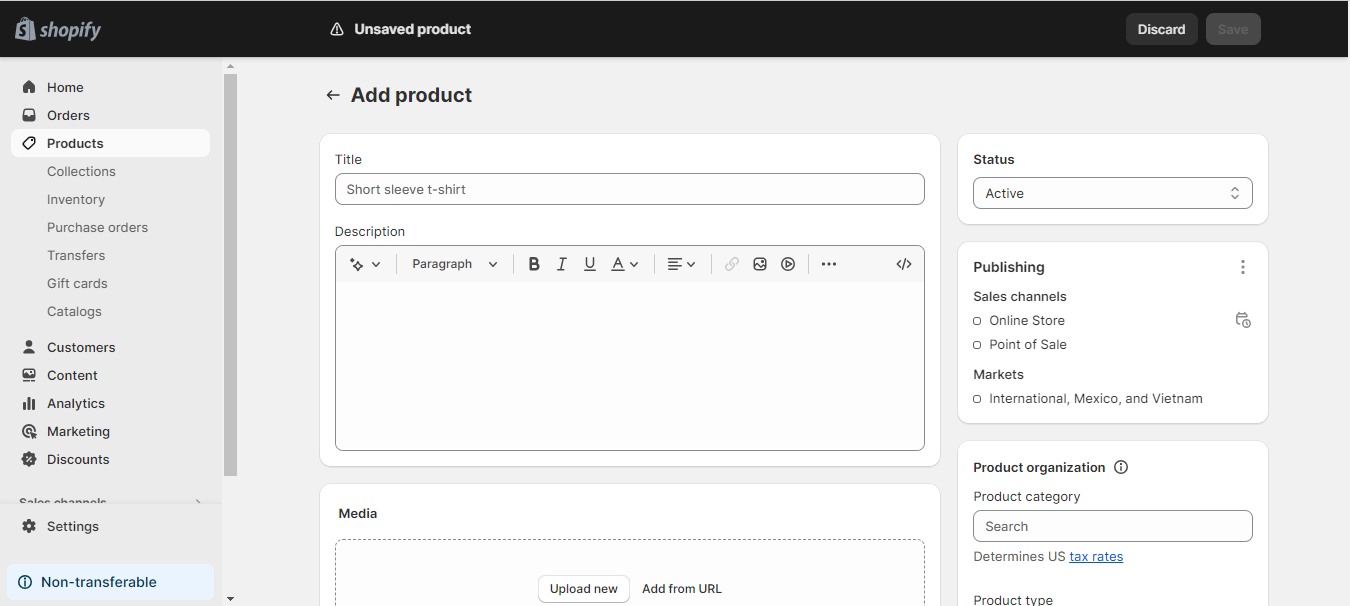
- Navigate to the “Products” section in your dashboard.
- Click “Add product” and fill in product details such as title, description, and pricing.
- Upload high-quality images and organize products into categories.
Step 5: Set Up Payments
- Configure your preferred payment gateways (e.g., Shopify Payments, PayPal).
- Set up tax rates based on your business location.
Step 6: Configure Shipping
- Define shipping zones and rates for different regions.
- Choose shipping options and carriers.
- Set up free shipping or flat-rate options if applicable.
Step 7: Launch Your Store
- Remove any password protection if applied during setup.
- Connect your custom domain if you have one.
Step 8: Explore Shopify Apps
- Visit the Shopify App Store to discover apps that enhance your store’s functionality.
- Install apps for marketing, analytics, customer support, and other specific needs.
Step 9: Optimize for SEO
- Configure SEO settings in the “Online Store” section of the “Settings.”
- Enhance product titles, descriptions, and meta tags for optimal search engine optimization.
Step 10: Learn Shopify Analytics
- Explore the “Analytics” section to track sales, website traffic, and customer behavior.
- Use data insights to make informed decisions about product offerings and marketing strategies.
Step 11: Customer Support and Resources
- Provide excellent customer support by responding promptly to inquiries.
- Explore the Shopify Help Center for documentation, guides, and tutorials.
- Engage with the Shopify Community to connect with other entrepreneurs and gain insights.
The Best Courses to Learn Shopify
Learning Shopify effectively often involves a combination of hands-on experience, official documentation, and specialized courses. Here are some popular and reputable courses to help you learn Shopify:
- Shopify Academy: Shopify offers its own free training resources through Shopify Academy. These courses cover various aspects, from setting up your store to advanced marketing strategies. The courses are created by Shopify experts and provide a comprehensive understanding of the platform.

- Shopify Compass: Similar to Shopify Academy, Shopify Compass offers free online courses that span a diverse array of topics, including store setup, marketing, and design. It proves beneficial for both newcomers and seasoned users of Shopify.
- Udemy – Shopify Dropshipping Course: Udemy hosts numerous courses on Shopify, and one popular option is the Shopify Dropshipping Course. These courses often cover the entire process of setting up a Shopify store, finding products, and using dropshipping as a business model.
- Skillshare – Shopify Courses: Skillshare offers a variety of courses on Shopify, including design, marketing, and store optimization. Courses on Skillshare are often project-based, allowing you to apply what you learn directly to your own store.
- Coursera – E-commerce and Shopify Course: Coursera collaborates with top universities and organizations to offer courses. Some cover e-commerce and the use of platforms like Shopify. Look for courses that provide a broader understanding of e-commerce principles along with Shopify-specific content.
- LinkedIn Learning – Shopify Courses: LinkedIn Learning offers various courses on Shopify, covering different aspects like theme customization, app development, and marketing. Courses often include video tutorials and hands-on exercises.
- Ecom Elites – Shopify Course: Ecom Elites is a paid course created by Franklin Hatchett, covering dropshipping on Shopify. It’s known for its practical insights and step-by-step guides for creating a successful e-commerce store.
- Shopify Academy on YouTube: Shopify’s official YouTube channel offers a wealth of tutorials, webinars, and success stories. It’s a great free resource for visual learners.
- Shopify Theme Development Documentation: If you’re interested in theme development, Shopify’s official documentation is an invaluable resource. It provides in-depth information on Liquid (Shopify’s templating language) and theme customization.
Remember, the best course for you depends on your specific needs, whether you’re a beginner looking to set up a store or an experienced user wanting to delve into advanced strategies. Always check reviews, course content, and the instructor’s credibility before making a choice.
Read more: Shopify SEO Tutorial 2023: A-Z Guide to Rank #1
Conclusion
Mastering Shopify for e-commerce opens up a world of possibilities for your online business. From a user-friendly interface to powerful customization options, this dynamic duo empowers you to create a compelling and efficient online store. Go ahead, implement these learnings, and embark on your journey to e-commerce excellence!






